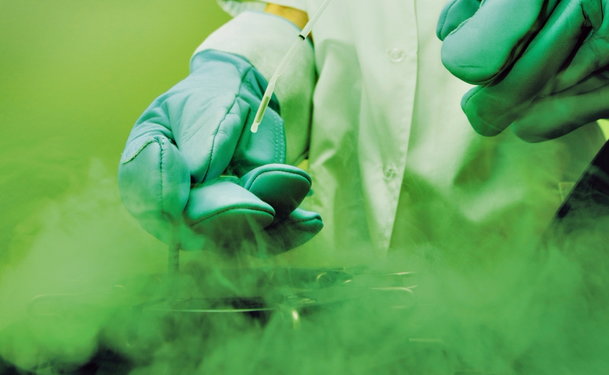Updated October 2018
Sperm banks collect and store sperm. As part of this, a sperm bank laboratory analyzes semen samples and provides long-term storage of semen. Some banks also offer donor sperm programs.
How are sperm banks used?
Some of the sperm stored in these banks are donations made to help infertile couples or single parents have a child. These samples come from men who have been extensively screened and approved for a sperm donor program. They may be paid for their donations, or simply provided as an opportunity to help others conceive.
Sperm banks also provide long-term storage for men who want to ensure that they will have the option of having children later. These men may have a low sperm count, or they may be undergoing a medical procedure that puts them at risk for infertility, such as vasectomies, cancer treatments, gender reassignment or other types of surgery.
What's the criteria for sperm donation?
Sperm banks have very strict criteria for donated sperm. Each clinic has its own process, but they all generally require a potential donor to fill out an application, go through an in-depth screening process and provide semen samples for testing.
Men who wish to donate their sperm can be from any ethnicity or background, but generally must meet requirements such as:
- Be between 18 and 40 years of age
- Provide the clinic with a detailed family medical history going back two or three generations
- Have no chronic health problems
- Be able to commit up to one year to the sperm donor program
- Be screened for genetic disease and sexually transmitted infections
Some sperm banks may also have additional, specific donor requirements.
If a man passes the initial screening, he then provides semen samples for testing. These are checked for sperm quality and count. He is then interviewed and given a complete medical examination.
How is sperm collected and stored?
Once a man is approved for the program, he provides a semen sample at least once a week. During this time, he is asked to avoid ejaculation — which can reduce the sperm count — for up to seven days before sperm collection.
As long as men are in the sperm donor program, they and their samples are regularly screened for genetic diseases and sexually transmitted infections. This includes screening for cystic fibrosis and chromosome abnormalities.
Men typically make their donation in a private room at the sperm bank’s laboratory. They can also collect their sample at home and ship it overnight to the sperm bank. All semen samples are collected in a dry, sterile container.
Before sperm samples are frozen, they are prepared with a solution that reduces damage to the sperm from freezing and thawing. These samples are placed in small tubes and frozen slowly. The frozen samples are stored in liquid nitrogen at very low temperatures. This is known as cryopreservation.
As long as frozen sperm are properly stored, they can be viable for decades. Samples remain in the sperm bank until the donor decides to withdraw from the donor program or end his long-term storage contract.
Credible sperm banks undergo inspections and are certified by organizations such as the American Association of Tissue Banks (AATB).
How is sperm selected for use?
Potential recipients choose sperm donors from a donor profile that includes the donor’s family and medical history and sometimes photos. Donors have the option of remaining anonymous or having their identity made available to future offspring.
Recipients have to follow a standard procedure before they can withdraw a specimen from the sperm bank. This includes having a physician who will receive the specimens. Samples are tested again after they are thawed to make sure they have a minimum number of sperm with good motility.
Reviewed By


